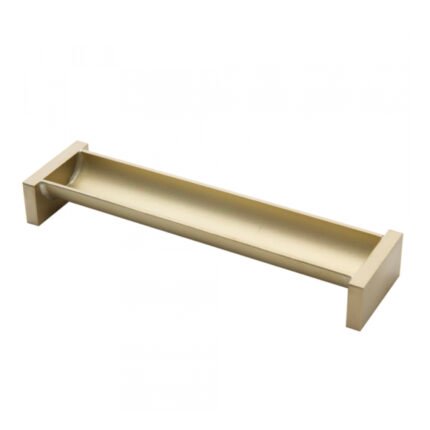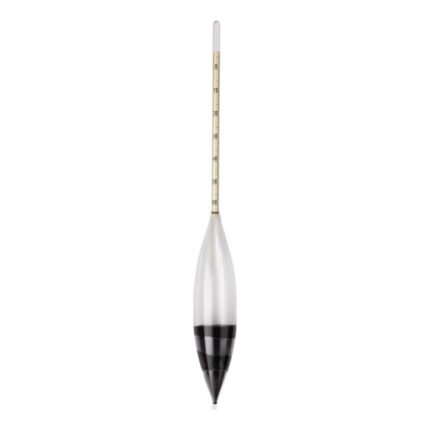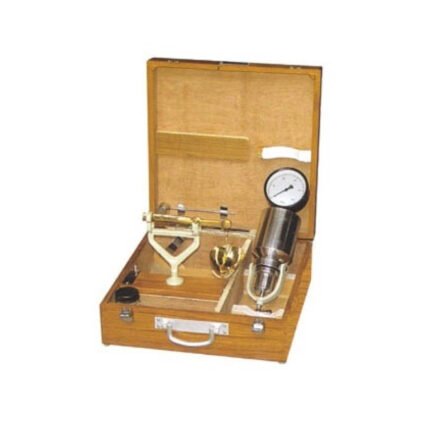AZA 0863 STANDARD COMPACTION TEST
- Standard Compaction Test: Specifically designed to perform the Standard Proctor Compaction Test.
- Fundamental Soil Property: Determines the maximum dry density and optimum moisture content of soils.
- Essential for Earthwork: Crucial for quality control in road construction, embankments, and foundations.
- Complete Apparatus: Includes a robust compaction mould, standard rammer, and necessary accessories.
- Standard Compliant: Adheres to international standards such as ASTM D698 and equivalent IS/BS norms.
- Azalab Quality: Durable and precise equipment for reliable geotechnical testing results.
Description
AZA 0863: Standard Compaction Test Apparatus for Foundational Soil Analysis
The AZA 0863 Standard Compaction Test Apparatus from Azalab is a cornerstone instrument for any geotechnical testing laboratory. This apparatus is specifically used to perform the Standard Compaction Test, universally known as the Standard Proctor Compaction Test. This fundamental procedure establishes the relationship between the moisture content and the dry density of a soil when compacted with a standard amount of compactive effort. The resulting parameters, the Maximum Dry Density (MDD) and Optimum Moisture Content (OMC), are indispensable for controlling the soil compaction in the field during construction of roads, embankments, foundations, and other earth structures.
The Standard Proctor Compaction Test is a critical laboratory procedure designed to simulate the compaction achieved by light compaction equipment in the field. By determining the MDD and OMC, engineers can specify the target density and moisture range for soil compaction in construction, ensuring that the compacted soil achieves optimal strength, stability, and impermeability.
The AZA 0863 Standard Compaction Test Apparatus typically comprises:
- Compaction Mould: A cylindrical steel mould, commonly 101.6 mm (4 inches) in internal diameter and 116.4 mm (4.58 inches) in effective height (for ASTM D698), or 100 mm (3.94 inches) diameter and 127.3 mm (5 inches) height (for IS 2720 Part VII), with a detachable collar and a base plate. The mould volume is designed to hold a specific amount of soil for compaction.
- Standard Compaction Rammer (Hammer): This is the key component. For ASTM D698, it’s a 2.49 kg (5.5 lbs) hammer with a free fall of 304.8 mm (12 inches). For IS 2720 (Part VII), it’s a 2.6 kg hammer with a 310 mm drop. The hammer’s face is typically 50.8 mm (2 inches) in diameter.
- Accessories: This usually includes a sample extruder (optional but highly recommended for easy removal of compacted soil), a mixing pan, and other tools for preparing the soil sample.
Performing the Standard Compaction Test involves compacting a soil sample at various moisture contents in the mould in a specified number of layers (typically 3 layers for Standard Proctor), with each layer receiving a set number of blows (e.g., 25 blows for 4-inch mould) from the standard rammer. After compaction, the compacted soil’s wet density is determined, and a representative sample is taken to find its actual moisture content. This process is repeated for several moisture contents, and a compaction curve is plotted (dry density vs. moisture content) to identify the MDD and OMC.
The AZA 0863 is manufactured to strict compliance with international standards, ensuring that test results are accurate, reproducible, and comparable across different laboratories and projects. Key standards include ASTM D698 (Standard Test Methods for Laboratory Compaction Characteristics of Soil Using Standard Effort), IS 2720 (Part VII) (Methods of test for soils: Determination of water content-dry density relation using light compaction), and BS 1377-4 (Methods of test for soils for engineering purposes: Compaction-related tests). Adherence to these standards is crucial for reliable geotechnical design and construction quality assurance.
Azalab’s commitment to providing high-quality geotechnical testing equipment means the AZA 0863 Standard Compaction Test Apparatus is built from robust, durable materials, designed to withstand the repetitive impact of the compaction process in a busy laboratory setting. Investing in this apparatus ensures that your lab can accurately determine the critical compaction parameters required for foundational earthwork and pavement layers. For further details on soil compaction theory and practice, reference authoritative texts on “Soil Mechanics and Foundation Engineering” or relevant standards from organizations like ASTM International and the Bureau of Indian Standards (BIS).
Specifications for the AZA 0863 STANDARD COMPACTION TEST APPARATUS
- Model Number: AZA 0863
- Test Method: Standard Compaction Test (Standard Proctor Compaction Test)
- Purpose: To determine the Maximum Dry Density (MDD) and Optimum Moisture Content (OMC) of soils under standard compaction effort.
- Compaction Mould (ASTM Type):
- Material: Heavy-duty steel.
- Internal Diameter: 101.6 mm (4 inches).
- Effective Height: 116.4 mm (4.58 inches).
- Volume: Approximately 944 cm³.
- Components: Includes mould body, detachable collar, and base plate.
- Compaction Mould (IS Type – if offered as alternative/option):
- Material: Mild steel.
- Internal Diameter: 100 mm.
- Height: 127.3 mm.
- Volume: 1000 cm³.
- Components: Includes mould body, detachable collar, and base plate.
- Standard Compaction Rammer (Hammer):
- ASTM D698 Type: Weight 2.49 kg (5.5 lbs), Drop Height 304.8 mm (12 inches), Face Diameter 50.8 mm (2 inches).
- IS 2720 Part VII Type: Weight 2.6 kg, Drop Height 310 mm, Face Diameter 50 mm.
- Note: Specific hammer type will be supplied based on chosen standard or as a set.
- Construction: Robust, heavy-duty plated or painted steel for durability and corrosion resistance.
- Included Accessories: Typically includes the mould assembly, rammer, and potentially an extruder for removing samples. Other lab essentials (balances, oven, mixing tools) are usually separate.
- Compliance: Designed to meet or exceed the requirements of:
- ASTM D698
- IS 2720 (Part VII)
- BS 1377-4
- Application: Geotechnical testing laboratories, civil engineering projects (roads, embankments, foundations).
FREQUENTLY ASKED QUESTIONS (FAQ) about the AZA 0863 STANDARD COMPACTION TEST APPARATUS
Q1: What is the AZA 0863 Standard Compaction Test Apparatus used for? A1: The AZA 0863 is used to perform the Standard Compaction Test (Standard Proctor Compaction Test). This laboratory test determines the maximum dry density (MDD) and optimum moisture content (OMC) of soil.
Q2: What is the purpose of determining MDD and OMC? A2: These parameters are crucial for soil compaction quality control in earthwork projects. They allow engineers to specify the target density and moisture range for compaction in the field, ensuring the stability and performance of compacted soil layers.
Q3: What are the main components of the AZA 0863 apparatus? A3: The primary components are the compaction mould (typically 100mm or 4-inch diameter) and the standard compaction rammer (hammer) with its specific weight and drop height (e.g., 2.49 kg and 304.8 mm drop for ASTM D698).
Q4: What international standards does the AZA 0863 comply with? A4: The AZA 0863 is designed to comply with major international standards for the Standard Proctor test, including ASTM D698, IS 2720 (Part VII), and BS 1377-4.
Q5: What types of soil can be tested with this apparatus? A5: It is suitable for a wide range of fine-grained and granular soils commonly used in earthwork construction. The test is generally applicable to soils passing a 4.75mm sieve, or up to 19mm with proper preparation and mould size.
Q6: Can this apparatus be automated? A6: The AZA 0863 refers to the manual apparatus. For automated testing, an Automatic Soil Compactor (like the AZA 0867, if available) would be used, which mechanically performs the hammer drops.
Q7: How many layers and blows are typically used in the Standard Compaction Test? A7: For the Standard Compaction Test, the soil is typically compacted in three equal layers, with each layer receiving 25 blows from the standard rammer (for a 4-inch mould).
Additional information
| Model Number |
AZA 0863 |
|---|---|
| Test Method |
Standard Compaction Test (Standard Proctor Compaction Test) |
| Application |
Geotechnical testing laboratories |
| Purpose |
To determine the Maximum Dry Density |
Related products
AZA 0850 LINEAR SHRINKAGE MOULD
AZA 0854 LIQUID LIMIT DEVICE (MOTORISED)
AZA 0855 HIGH SPEED STIRRER
AZA 0858 SOIL HYDROMETER
AZA 0860 METHYLENE BLUE TEST SET
- Determines clay content in fines and aggregates
- Based on Methylene Blue Value (MBV) method
- Complies with ASTM C837 and EN 933-9 standards
- Includes digital burette, conical flask, filter paper, and stirrer
- High sensitivity to montmorillonite and other clays
- Ideal for geotechnical, concrete, and aggregate testing labs
AZA 0864 STANDARD COMPACTION TEST
AZA 0872 DYNAMIC CONE PENETROMETER
- Dynamic Cone Penetrometer (DCP): Essential for rapid in-situ testing of soil strength and compaction.
- Pavement Evaluation: Ideal for assessing subgrade, sub-base, and base course layers in road construction.
- Direct Readout: Provides immediate penetration resistance data, correlating to CBR values.
- Portable & User-Friendly: Lightweight and easy to operate, suitable for various field conditions.
- Robust Construction: Durable components for long-lasting performance in demanding geotechnical testing.
AZA 0873 SPEEDY MOISTURE ZI 3027 METER (D2 LARGE)
- Speedy Moisture Meter: Utilizes the calcium carbide method for swift and precise moisture content determination.
- D2 Large Capacity: Designed for larger sample sizes, enhancing representativeness and accuracy for broader material types.
- Field Ready: Ideal for on-site field testing of soils, aggregates, sand, and other granular materials.
- Portable & Self-Contained: Operates without external power, making it perfect for remote locations.
- Rapid Analysis: Provides immediate results for efficient decision-making and quality control.
- Azalab Quality: Robust ZI 3027 frame ensures durability and reliable performance in demanding environments.

 Rock
Rock Aggregate
Aggregate Cement
Cement Concrete
Concrete Soil
Soil Steel
Steel Bitumen/Asphalt
Bitumen/Asphalt Security Survey Equipment
Security Survey Equipment General Items
General Items










